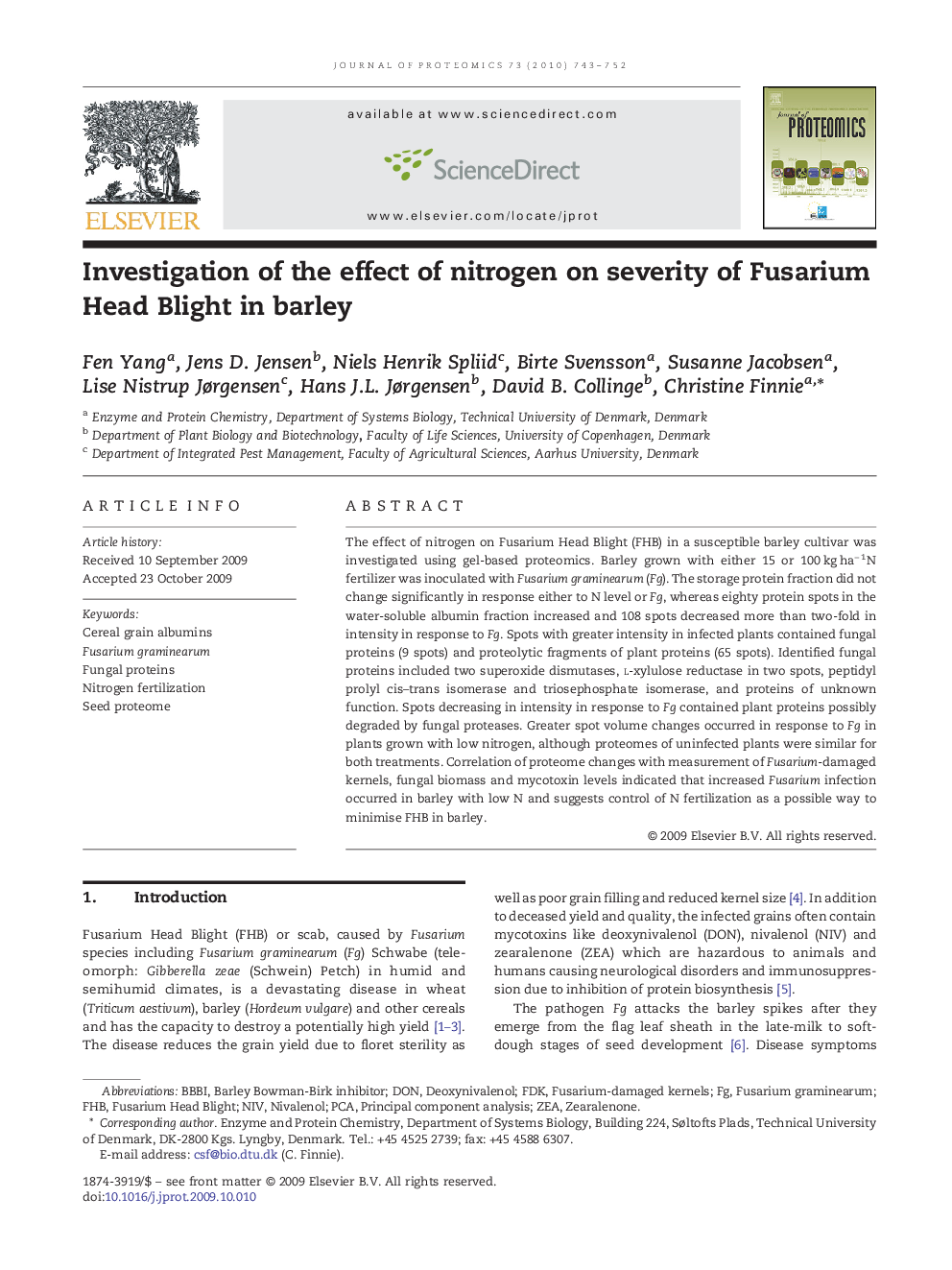| Article ID | Journal | Published Year | Pages | File Type |
|---|---|---|---|---|
| 1225858 | Journal of Proteomics | 2010 | 10 Pages |
The effect of nitrogen on Fusarium Head Blight (FHB) in a susceptible barley cultivar was investigated using gel-based proteomics. Barley grown with either 15 or 100 kg ha− 1 N fertilizer was inoculated with Fusarium graminearum (Fg). The storage protein fraction did not change significantly in response either to N level or Fg, whereas eighty protein spots in the water-soluble albumin fraction increased and 108 spots decreased more than two-fold in intensity in response to Fg. Spots with greater intensity in infected plants contained fungal proteins (9 spots) and proteolytic fragments of plant proteins (65 spots). Identified fungal proteins included two superoxide dismutases, l-xylulose reductase in two spots, peptidyl prolyl cis–trans isomerase and triosephosphate isomerase, and proteins of unknown function. Spots decreasing in intensity in response to Fg contained plant proteins possibly degraded by fungal proteases. Greater spot volume changes occurred in response to Fg in plants grown with low nitrogen, although proteomes of uninfected plants were similar for both treatments. Correlation of proteome changes with measurement of Fusarium-damaged kernels, fungal biomass and mycotoxin levels indicated that increased Fusarium infection occurred in barley with low N and suggests control of N fertilization as a possible way to minimise FHB in barley.
Graphical abstractFigure optionsDownload full-size imageDownload high-quality image (486 K)Download as PowerPoint slide
